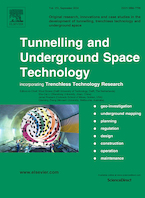Traffic safety improvement method for highway tunnel entrances based on linear guiding − An engineering practice from China
- Autors: Yongzheng Yang, Zhigang Du, Francisco Alonso, Mireia Faus, Hongliang Wan (2025).
- Tipus de publicació: Article
- URL Publicacio: Traffic safety improvement method for highway tunnel entrances based on linear guiding − An engineering practice from China
- Titol publicació (nom del llibre o de la revista): Tunnelling and Underground Space Technology. Num.156:106267
-
Resum:
To improve traffic safety at the entrance of highway tunnels, a comparative analysis of the traffic environment inside and outside the tunnel was conducted, and an improvement scheme based on “linear visual guiding” was developed by considering the human factors. Before and after the improvement of nine experimental tunnels, two batches of vehicle experiments were conducted to analyze the improvement effect of linear guiding scheme on traffic safety. The results show that the linear guiding scheme warns drivers and enables them to make preparations to enter the tunnel earlier. After improvement, the starting position for deceleration (SPD) was 61%earlier and the length of the deceleration section (LDS) has increased by 42%; the starting position for trajectory change (SPTC) was 153% earlier and the length of the trajectory change section (LTCS) has increased by 44%.The improved deceleration and trajectory change are earlier and smoother, and the dramatic changes in speed and trajectory in the tunnel entrance are resolved. When entering the tunnel, drivers sequentially complete deceleration, vehicle trajectory adjustment, and visual adaptation to black-hole effect, disperses driving tasks, reducing the coupling of driving risks. And use linear guiding facilities to enhance the local brightness of the tunnel, enhancing the driver’s visual perception ability in the black-hole effect area. Linear guiding scheme has good results during day, night, and fog, and is able to improve traffic safety at tunnel entrances in all-weather and multiple time periods
DOI: 10.1016/j.tust.2024.106267ISSN: 1878-4364










